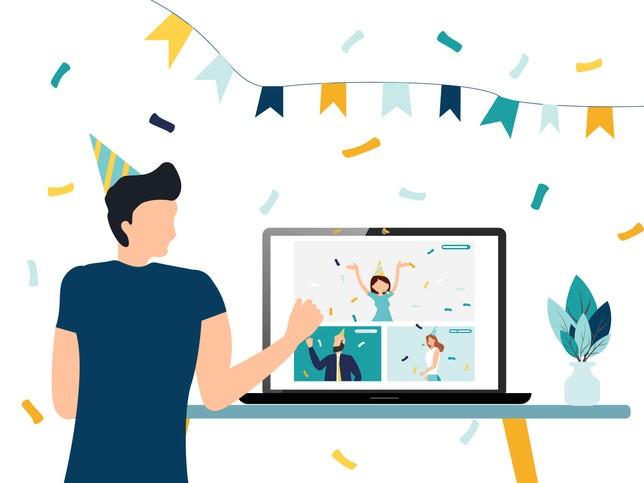
In praise of the ‘watch party’ – an update to the flipped learning model

Most universities offer some form of flipped learning, in which students are asked to watch a video, digest research or do some reading before attending an in-person lecture. It can be a great way to free up time in the session for deeper exploration of the subject matter, but this approach doesn’t suit everyone.
At first-year level in particular, we find that many students struggle with the amount of self-directed learning expected − and the time management required to do it effectively. Flexibility is important, but the freedom to choose when to engage can quickly become overwhelming for students in the early stages of their course, particularly if they are still getting to grips with the pace of university life.
This isn’t because newer students are any less passionate about their subject than their more experienced peers or that they’re not doing enough work − they simply haven’t yet had the chance to develop the critical, independent learning skills they need.
With this in mind, the School of Psychology and Neuroscience at the University of Glasgow introduced the “Watch Party”, a fresh take on the flipped learning model. It is helping less-experienced students establish valuable independent study skills and providing an opportunity for students at all levels to come together as a community.
But what’s a watch party? Well, students attend a timetabled lecture as they would usually do, but rather than the session being delivered live, we stream videos that have been pre-recorded and shared on our video learning platform, Echo360. During the session, this means the lecturer is now freed up to communicate with students in real time via a digital chat channel, answering questions posed by students but also incorporating quizzes and other interactive elements.
There are three key factors that we think make watch parties a useful alternative to traditional live or asynchronous online alternatives:
1. Structure
Having a set time for the lectures gives students routine and structure to their day, and this helps them keep on top of their work.
Importantly, we also record all watch party sessions and make them available to students afterwards, so if they can’t make the lecture, they can catch up on what they missed or revisit any part of a session for revision purposes.
Watch parties offer the flexibility of fully asynchronous learning along with the structure and routine of live classes, and our pre-honours students have responded really positively to this.
2. Engagement
Along with providing structure, watch-party lectures can be an effective way to encourage students to engage with the topics being covered in the video recordings.
Our watch parties incorporate quizzes and Q&A-style activities that give students a break from the video and provide opportunities for meaningful interactions between students and lecturers via a digital chat channel.
Students will post questions or comments in the chat box, and they can get an immediate response, either from their lecturer or peers. It’s easy to share links to additional resources, too.
This type of engagement isn’t something that is specific to first-year students. The chat box makes active engagement with the material being presented much easier for students of all levels, and it helps reinforce the idea that learning should always be a dialogue – even when it’s happening as part of a seemingly didactic lecture.
3. Conversation
One of the most positive outcomes of watch-party lectures has been the difference a digital chat channel makes to the level of conversation.
Students seem less self-conscious about sharing their opinions and experiences of what we’re discussing and can bring their unique perspectives on important issues, such as being neurodivergent or LGBTQ, for example. There is greater willingness among students to ask and answer questions when they can do it via chat box, which adds so much value to the learning.
As lecturers, it’s been great to get insights into how students are finding a class that we wouldn’t normally get. And we couldn’t replicate this effectively in any other way. It’s just like a large, face-to-face lecture, but in a format where a much greater proportion of the class is participating.
Best of both
We originally designed watch-party lectures to keep students who were learning remotely during the pandemic engaged, by combining asynchronous and synchronous teaching approaches. However, they have been so well received by both students and staff that we’re now considering how we can retain the use of the chat box, even when we return to on-campus lectures.
Crucially, we believe this approach underlines why it is important for live lectures – even ones that are didactic in nature – to be recorded once we return to the lecture hall.
A simple video recording provides flexibility to those who need it most − but our experiences with watch parties have shown that there’s still power and purpose in attending the live session, particularly in the formative stages of study skill development.
Emily Nordmann and Carolina Kuepper-Tetzel are senior lecturers in the School of Psychology and Neuroscience, University of Glasgow. For those wishing to learn more, they have also produced “Watch Party Lectures: Synchronous Delivery of Asynchronous Material”, a recently published research paper exploring the merits of the watch party model.


